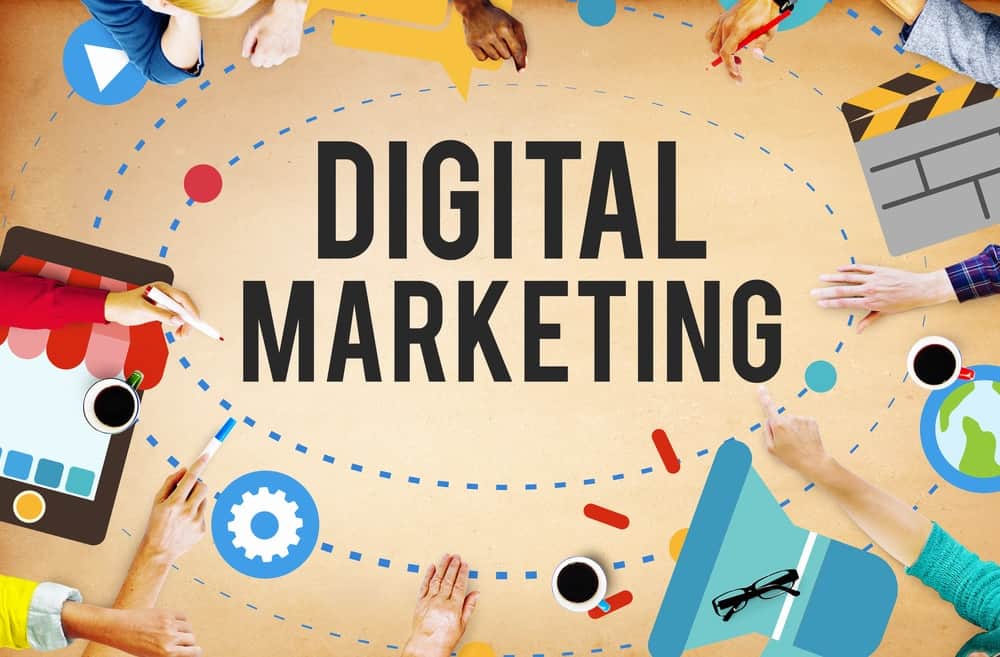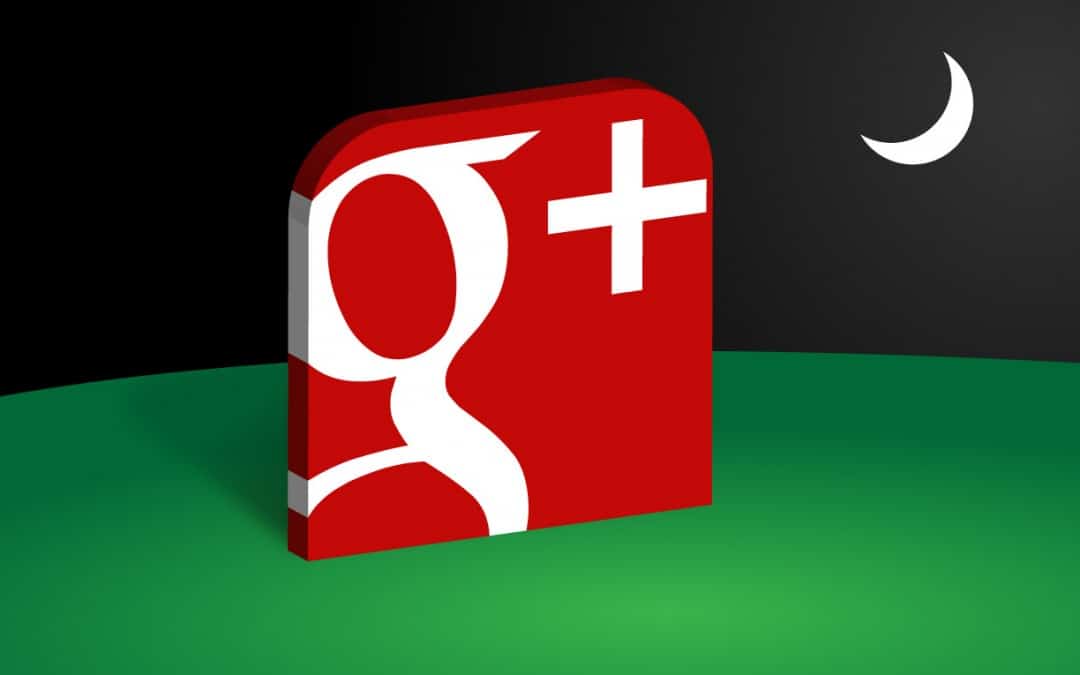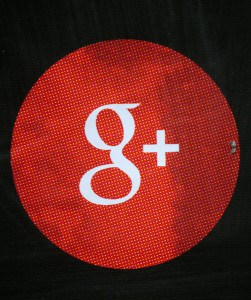
Julia Zheng
Online marketing techniques are changing as rapidly as the technology that enables them to be possible. In the future, the businesses that will be the most successful are the ones who understand the fluid nature of the online marketing world, and know how to appropriately adjust for these changes. However, the consensus is clear that the three most important areas to concentrate your marketing techniques are mobile marketing, social media marketing, and email campaigns.
Mobile
Time and time again, we’ve stressed the increasing importance of optimizing your content for mobile consumption. This has been validated by Google’s latest algorithm update in April 2015, otherwise known as “Mobilegeddon”. The more mobile-friendly a website ranked, the higher it appeared on Google’s search result pages. According to Salesforce’s State of Marketing Report, which surveyed over 5000 international marketers to ascertain what their top marketing priorities were, a majority of them emphasized that mobile applications were critical to creating a cohesive customer experience. Most marketers see some sort of ROI resulting from their mobile marketing investments. Mobile marketing is up 49% from the year before, finding that it contributes positively to generating leads. New businesses, especially, need to find lurking development opportunities and utilize them. Where are these opportunities? Hiding on people’s smartphones and tablets, which accounts for an increasingly larger portion of people’s time. Try advertising coupons and deals that are only available through mobile devices. Perhaps consider sending your customers welcome text-messages when they first sign up for your email subscription. Promote your social media or holiday campaigns through text message as well.
Social Media
Social media’s omnipresence in the past decade has been cemented, evidenced when you look around at people on their phones scrolling their Facebook feeds. Social media is an important enabler of a business’s success, as well as a roadway for important revenue production. An increasing number of companies are starting to develop a prominent social media arm, with a majority of companies employing more than 1 person to oversee their social media presence. Facebook and Twitter still reign supreme, but that is not to minimize the importance of other social media platforms that may be just as important, if not more so, for various companies. Other important social media stages include LinkedIn, YouTube, Google+, blogging, Instagram, and Vine, depending on the nature of your business. However, don’t abuse your power. This means that the content that you chose to share shouldn’t be completely self-promotional. Customers don’t want to be inundated with anymore advertisements. Rather, they want to learn. Balance what you share on your social media platform between informational content and self-promotion. If you can make the customer care about the field that you work in, and engage with the material that you share, then you can capture both the interest and loyalty of the customer.
Email Marketing
Email marketing is a technique that has been in the books for quite a few years, but shows no sign of slowing down. Email campaigns are important because it provides the consumer with continual exposure to what the company is doing. The more often a consumer is exposed to material relevant to your company, the more likely the consumer is going to fully engage with your company or product. Hiring staff who are dedicated to managing email campaigns are worth the initial investment because 92% of marketers said that that email produces ROI for the business, whether directly or indirectly. The proliferation of smartphones partially ties into the importance of successful email campaigns as well, because 50% of the time, people check their emails on their mobile devices. The template and presentation of the email is important. Companies must produce a fresh, easy to read design that will visually entice the readers. The content that goes out must be of good quality. Again, it must not all be self-promotional in nature. Infusionsoft and Anweber are two popular email providers that can help your company automate email funnels for this purpose.

Julia Zheng
Google+ was launched in June of 2011. It initially launched as a competitor to the social media giant, Facebook. Google+ has 2.5 billion users because every Gmail account automatically comes with a Google+ account. However, this raw data doesn’t tell the full story. At first glance, it would seem that Google has more than twice the amount of members that Facebook does. However, this is not the case. Active users is the number that holds the most significance because it shows how intimately the audience is engaged with the social media platform. When it comes to active users, Google+ only has about 300 million monthly active users. Conversely, Facebook boasts more than 1.4 billion active monthly users. The average profile of a Google+ user is a 28 year old male, most of whom come from a technology or engineering field. Conversely, the average profile for a Facebook user is pretty closely split between men and women. The average age is 38 years old, and there is a fairly equal representation of all industries.
Google+’s attempt to compete with Facebook seems like a failure. Google’s initial technique to attract users might have been their first step towards their ultimate failure. Rather than organically attracting users through a strong marketing technique or word of mouth, Google+ profiles were forced on everyone who already had an existing Gmail. Conversely, Facebook users were self-motivated to sign up, guaranteeing that Facebook had already captured the interest of their users before they signed up, heightening the stake that users had to engage in the Facebook community initially. Google’s attempt to directly compete with such an entrenched social network was an unwise move that had many opportunities for backfiring, because if Google+ tried to implement any improvements on Facebook’s features, Facebook would have quickly mirrored what they did, essentially negating Google+’s effects. Google+ didn’t offer any new, unique, or attractive incentives that Facebook didn’t already have. Users had no reason to uproot the established social media presence they already created on Facebook in order to move and start all over on Google+.
In April of 2014, Google experienced an early harbinger of the decreasing importance of Google+. Vic Gundotra, who was the head of Google+’s social arm, suddenly left Google. He had held the position for the past 8 years. No one currently knows where he is headed next. Rumors closely followed that Google had been slowly disintegrating the core team that worked for Google+, a team of roughly 1000-1200 employees.
During the last week of July 2015, Google announced on their blog that there will be a divorce between Google+ and YouTube, which means that you will no longer need a Google+ account in order to create a YouTube account, or be active in the YouTube community. This move comes at a time when Google is quietly but surely decreasing its presence of Google+ on the interweb. Google has finally been listening to the grumble of its users, who feel that the coupling of a Google+ account with a different platform makes their life more difficult, and was just a ploy to increase Google+’s user numbers.
What does thi s mean for SEO? Google+ still proves to be a valuable resource in terms of page rankings in Google’s search engine results. Google Authorship markup and Google Author Rank integration are two features of Google+ that still might prove useful. For instance, if you link your content page to your Google+ page, Google Authorship will display your stats and your Google+ profile next to search results with your content. This visually draws readers in, improving click-through rates. The more people who +1 your content, the more likely that page or article will show up for them on a search engine, as well as for everyone who follows them. This two fold attack allows you to build a strong following, as well as potentially attracting the attention of powerful players in your market. From an SEO standpoint, it may be valuable to continue to actively post on your company’s Google+ page. However, from a social media and personal life standpoint, this may be one that will have to be struck through in the books as a loss.
s mean for SEO? Google+ still proves to be a valuable resource in terms of page rankings in Google’s search engine results. Google Authorship markup and Google Author Rank integration are two features of Google+ that still might prove useful. For instance, if you link your content page to your Google+ page, Google Authorship will display your stats and your Google+ profile next to search results with your content. This visually draws readers in, improving click-through rates. The more people who +1 your content, the more likely that page or article will show up for them on a search engine, as well as for everyone who follows them. This two fold attack allows you to build a strong following, as well as potentially attracting the attention of powerful players in your market. From an SEO standpoint, it may be valuable to continue to actively post on your company’s Google+ page. However, from a social media and personal life standpoint, this may be one that will have to be struck through in the books as a loss.

Julia Zheng
The name of the content marketing game is changing thanks to increasing power by the consumer. Streaming services such as Netflix allow users to watch shows without commercials. Excess banners on the periphery of websites are getting ignored and no longer clicked. The ads that play at the beginning of certain Youtube Videos can be skipped. The conventional way of marketing is undergoing somewhat of an upheaval. Therefore, your content marketing needs to be able to adapt. Here are some pointers for how to successfully utilize content marketing.
Visual Content – Users love visual content because it’s lightweight, easy digestible, and is appealing to the eye. Mentally, visuals are processed more quickly than text. For instance, imagine that you are sitting in a board room watching someone give another PowerPoint presentation about their latest proposal. What is more likely to catch your attention? Slides that are filled with images, or slides that the speaker directly reads from? Slides that are filled with images allow the speaker to use the pictures as a guide, instead of using words as a crutch. Try utilizing infographics which educates because they can also serve as a great vehicle for more brand recognition, which translates to more traffic and attention towards your company.
Influencer Marketing – Influencer marketing is no longer about the attention that a celebrity endorsement can bring to a product. Marriott, the well known hotel change, recognized that fact and launched a successful influencer marketing strategy with a non-traditional stance. David Beebe, Marriott’s Vice president of global creative and content marketing for Marriott International, said that his plan focused on content, community, and commerce, otherwise known as the 3 C’s. He has partnered with multiple people across a variety of social media platforms in order to produce content, which includes travel videos, travel vlogs, and short films. David asked the influencers to present a concept to him. The individuals that he works with are given almost complete artistic freedom to do as they want, so that the two can establish a platform of trust. For instance, in order to appeal to people wanting to highlight a loved one in their life, Marriot created a 12 episode series called Year of Surprises. This was geared towards their Marriott Rewards members, who asked people to nominate and submit someone who they felt deserved recognition and a surprise in their lives. In order to appeal to a large subscriber base, he partnered with Jack Harries, who directs a travel vlog with over 4 million subscribers on YouTube. Jack was sent to produce several short videos in countries where Marriot had a notable presence.
Utilize Social Media Strategically – Think of social media as your way to advertise your content. Say you’ve just posted a new article on your blog. Let the world know. Post it on your Facebook. Make it shareable and clickable on your Instagram profile. Let the Twitter world know. Advertise it on your Snapchat story. Social media holds an enormous amount of consumer power so don’t be afraid to tap into it. However, be careful about what you post. The goal of any content that you create should be to educate your consumers, not to advertise. Analyze your social data so you know which audiences like to see what types of content. Know what works well, what doesn’t, and adjust. Track your email conversations and social shares. Be honest if your data reveals that not everyone who shares your post is actually taking the time to read your posts. Adjust accordingly Are your Facebook posts conducive to open conversation on a public forum? Are they meaningful to your audience? Are you educating your readers about something that can help them become more engaged with your service or your product? The more you can make your product and your field matter to your audience, the more likely they will further engage in any relevant materials and conversation you hope to open to them.

Julia Zheng
Google’s Algorithms are a top-secret component of Google that relies on over 200 signals that helps give users the results they’re looking for when using Google. Over the years, it has gone through a long series of updates and changes to prevent any company from “hacking” and abusing the system. The systems they use to calculate these page rankings put the most important and relevant websites higher up on the results page, and the less important websites appearing lower down or in later pages. Some signals that they use are PageRank, how recent and frequently your content is updated, and the terms on your website. Let’s go through a brief history of the most important Google Algorithm Changes.
December 2000- Google Toolbar was launched, and with it came the advent of the Toolbar PageRank. Larry Page is one of the founders of Google, and is also the person for whom PageRank is named after. It fits in auspiciously well with its prescribed role. If you have a web domain or own a small business, you know how important PageRank is to your day to day operations. The PageRank ranks websites as a whole number from 0-10, with 10 being the most popular websites and 0 being low-traffic, unpopular websites. Google will not disclose the full specificities of how a page acquires its PageRank value, but it is only a rough measurement of the value of a web domain.
October 2005 – Google Local is introduced. In October 2005, this feature merged the Google Apps feature into the Local Business Center feature that was launched in March. This change translated to a series of changes in local SEO tactics. It pushed the importance of local businesses to update their information.
April 2010– Google LBC was rebranded as Google Places. It integrates more information from local search results into the algorithm. It worked to better connect Google Place Pages with the settings where local business information is located. It allowed for the proliferation of QR codes, Favorite Places, the ability to pay for Enhanced Listings, and Business photos of the interior of the business. Small businesses were able to better their page rankings by putting themselves on Google Maps, which introduced many of them to the field of SEO.
February 2011 – The Panda Update is probably the most famous and substantial Google Algorithm update so far. This update put the SEO world into a frenzy. It set out to penalize content farms and low-quality websites. Before this update, markets could inundate their websites with low-quality articles. These articles could be written on the cheap by outsourcing the task to people abroad who were willing to take these labor intensive jobs. These low-quality articles would be stuffed to the brim with keywords, and for a long time, Google had rewarded these pages with higher rankings. However, this update shifted the focus from quantity to quality. The crack-down also applied to websites with high ad-to-content ratios. Updates on the Panda algorithm are still being added to this day.
update so far. This update put the SEO world into a frenzy. It set out to penalize content farms and low-quality websites. Before this update, markets could inundate their websites with low-quality articles. These articles could be written on the cheap by outsourcing the task to people abroad who were willing to take these labor intensive jobs. These low-quality articles would be stuffed to the brim with keywords, and for a long time, Google had rewarded these pages with higher rankings. However, this update shifted the focus from quantity to quality. The crack-down also applied to websites with high ad-to-content ratios. Updates on the Panda algorithm are still being added to this day.
April 2012 – The Webspam Update is another one of those infamous, major Google updates, otherwise colloquially known as the Penguin Update. It was a further move to de-emphasize content that was rife with keywords. There was a crack down on the buying and selling of links, as well as other black hat techniques. It impacted about 3.1% of total English search queries, and minor updates continued for several months afterwards.
April 2015 – The latest update emphasizes the increasing importance of making a website optimized for both computer and mobile use. How mobile-friendly a website was made a stronger ranking factor for mobile searches. This movement is otherwise known as “Mobilegeddon“. Google’s prioritization of the mobile-first design clearly outlines their stance on the issue, so make sure your website comes with a mobile friendly tag.

Julia Zheng
You know that the first thing that customers see when they are on your web domain is the design and layout of your website. However, that doesn’t mean that you’re allowed to let your content take the backseat. Your online presence is an important vehicle to convey your company’s stance. No matter how much subtle talking you do through your design, your content is what ultimately cements whatever message you are trying to communicate. Whether it be professional, reliable, fun, quirky, what have you, having engaging content that allows you to connect with your audience on an individual basis is of the utmost importance. Why?
It Tells a Story – When someone clicks on your website, they usually have a purpose in mind. Whether it’s to learn more about your product or a brand, you need to be able to have compelling content in order to capture their attention and make sure that it stays on you, not a competing brand. Story-telling is a way to make a personal connection between you and your customer, which draws them in. Even better if it creates a pathos, or an appeal to emotion. Stories are more than just the barebones facts. People enjoy detail. People enjoy stories that “show, not tell”. People enjoy stories that entertain, and people enjoy stories that make them cry. If you have an opportunity to tell a story through your content, do it. Because it is only when you have captured the reader’s attention, that their product and their brand will really stick in their heads.
Increases Traffic – Through the proliferation of SEO, it is easier for smaller businesses’ to get  their names “heard”, or “read”, in this case. Search engines also take into consideration “frequency”, which is how often a website is updated. The more frequently new material is added, the more points a website gets and therefore, the higher up on the search engine results it will get. Your website is your best marketing tool. Just like mainstream marketing, if you can turn potential clients into long-term clients, you will be able to establish valuable rapport and a connection with them. The more of these connections you can make, the more traffic your web page gets, which is great for both revenue, and for those clients to spread the word of your company by way of mouth or affiliate links.
their names “heard”, or “read”, in this case. Search engines also take into consideration “frequency”, which is how often a website is updated. The more frequently new material is added, the more points a website gets and therefore, the higher up on the search engine results it will get. Your website is your best marketing tool. Just like mainstream marketing, if you can turn potential clients into long-term clients, you will be able to establish valuable rapport and a connection with them. The more of these connections you can make, the more traffic your web page gets, which is great for both revenue, and for those clients to spread the word of your company by way of mouth or affiliate links.
Establish Yourself As an Expert – Create content that is relevant to your field of interest. For instance, you are a fashion blogger. However, your content isn’t limited to just pretty outfit pictures. It delves into the history of several fashion trends, or you post articles profiling the most up and coming people in the industry. When you keep producing content like this, you are sharing your knowledge of the field with your audience. This sort of content establishes that you know what you are talking about, which is an opportunity for other, less experienced companies to look to you for more information. Customers will see you are the “go-to” source for knowledge, grounding your importance in the industry.
Information, not Advertisements – Chances are, your audience has already sat through multiple re-runs of Youtube advertisements on their favorite vlogger’s video. Or they’ve already scrolled past several ad banners on the sidelines of their frequented websites. Society is already inundated with so much advertisement that they’re probably not looking at your page because of the catchy ad-banners. Consumers don’t want any more advertisements. People want information, and they want the ability to learn for themselves, rather than have an ad convince them that a particular product needs to be learned about. The best content can achieve what advertising is supposed to accomplish.



 s mean for SEO? Google+ still proves to be a valuable resource in terms of page rankings in Google’s search engine results. Google Authorship markup and Google Author Rank integration are two features of Google+ that still might prove useful. For instance, if you link your content page to your Google+ page, Google Authorship will display your stats and your Google+ profile next to search results with your content. This visually draws readers in, improving click-through rates. The more people who +1 your content, the more likely that page or article will show up for them on a search engine, as well as for everyone who follows them. This two fold attack allows you to build a strong following, as well as potentially attracting the attention of powerful players in your market. From an SEO standpoint, it may be valuable to continue to actively post on your company’s Google+ page. However, from a social media and personal life standpoint, this may be one that will have to be struck through in the books as a loss.
s mean for SEO? Google+ still proves to be a valuable resource in terms of page rankings in Google’s search engine results. Google Authorship markup and Google Author Rank integration are two features of Google+ that still might prove useful. For instance, if you link your content page to your Google+ page, Google Authorship will display your stats and your Google+ profile next to search results with your content. This visually draws readers in, improving click-through rates. The more people who +1 your content, the more likely that page or article will show up for them on a search engine, as well as for everyone who follows them. This two fold attack allows you to build a strong following, as well as potentially attracting the attention of powerful players in your market. From an SEO standpoint, it may be valuable to continue to actively post on your company’s Google+ page. However, from a social media and personal life standpoint, this may be one that will have to be struck through in the books as a loss.



 their names “heard”, or “read”, in this case. Search engines also take into consideration “frequency”, which is how often a website is updated. The more frequently new material is added, the more points a website gets and therefore, the higher up on the search engine results it will get. Your website is your best marketing tool. Just like mainstream marketing, if you can turn potential clients into long-term clients, you will be able to establish valuable rapport and a connection with them. The more of these connections you can make, the more traffic your web page gets, which is great for both revenue, and for those clients to spread the word of your company by way of mouth or affiliate links.
their names “heard”, or “read”, in this case. Search engines also take into consideration “frequency”, which is how often a website is updated. The more frequently new material is added, the more points a website gets and therefore, the higher up on the search engine results it will get. Your website is your best marketing tool. Just like mainstream marketing, if you can turn potential clients into long-term clients, you will be able to establish valuable rapport and a connection with them. The more of these connections you can make, the more traffic your web page gets, which is great for both revenue, and for those clients to spread the word of your company by way of mouth or affiliate links.